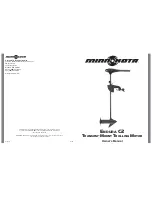
16
User's Manual | CS631
Chapter 2
HARDWARE INSTALLATION
USB Ports
USB allows data exchange between your computer and a wide range of simultaneously acces-
sible external Plug and Play peripherals. The system board is equipped with multiple USB Type
A ports at the rear side — two USB 2.0 ports, two USB 3.1 Gen1 ports, and two USB 3.1 Gen2
ports. For the internal USB ports, please refer to the next section. Please refer to the next sec-
tion for internal USB connectors.
BIOS Setting
Configure the onboard USB in the Advanced menu (“USB Configuration” submenu) of the BIOS.
Refer to chapter 3 for more information.
Wake-On-USB Keyboard/Mouse
The Wake-On-USB Keyboard/Mouse function allows you to use a USB keyboard or USB mouse
to wake up a system from the S3 (STR - Suspend To RAM) state.
USB 8 (USB 2.0)
USB 4 (USB 3.1 Gen 2)
USB 2 (USB 3.1 Gen 1)
USB 3 (USB 3.1 Gen 2)
USB 1 (USB 3.1 Gen 1)
USB 7 (USB 2.0)
VGA
DP++ 2
DP++ 1
X
Rear I/O Ports
Graphics Display
VGA
The VGA port is used for connecting a VGA monitor. Connect the monitor’s 15-pin D-shell cable
connector to the VGA port. After you plug the monitor’s cable connector into the VGA port, gen-
tly tighten the cable screws to hold the connector in place.
Displ+
The DisplayPort (DP) is a digital display interface used to connect a display device such as a
computer monitor. It is used to transmit audio and video simultaneously. The interface, which
is developed by VESA, delivers higher performance features than any other digital interface.
DP++ is supported by the system board for converting to DVI and HDMI signals.
BIOS Setting
Configure the display devices in the advanced menu (“Video Configuration” submenu) of the
BIOS. Refer to the chapter 3 for more information.
Driver Installation
Install the graphics driver. Refer to the chapter 4 for more information.
X
Rear I/O Ports
















































